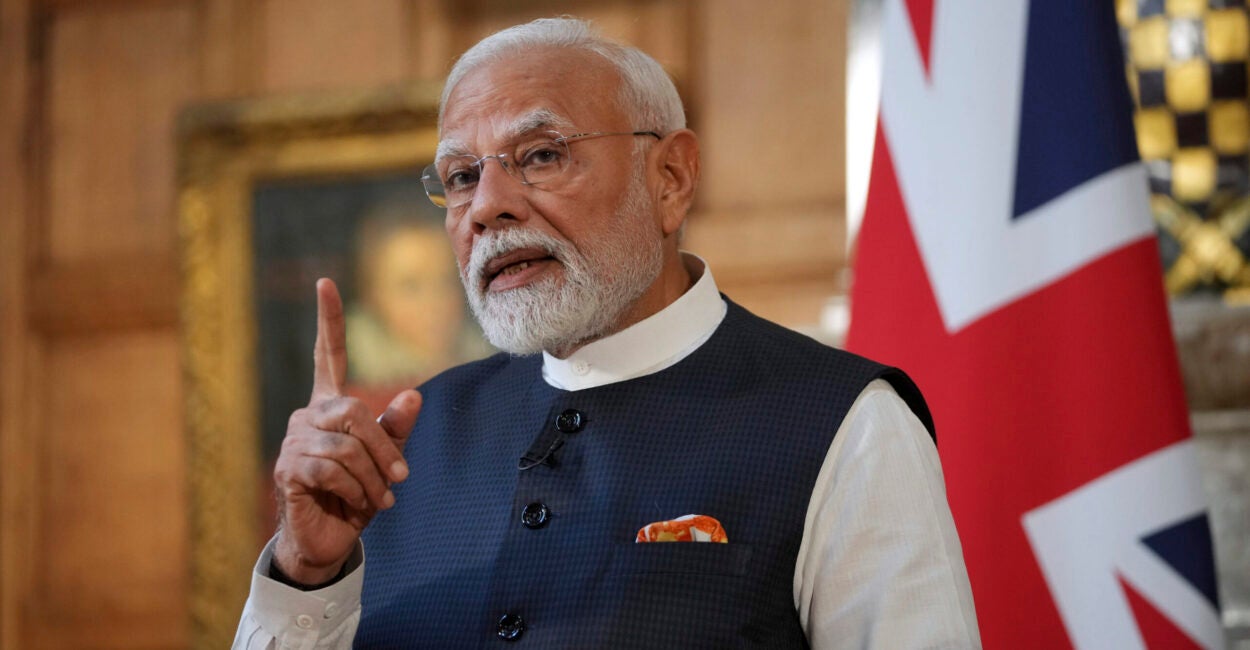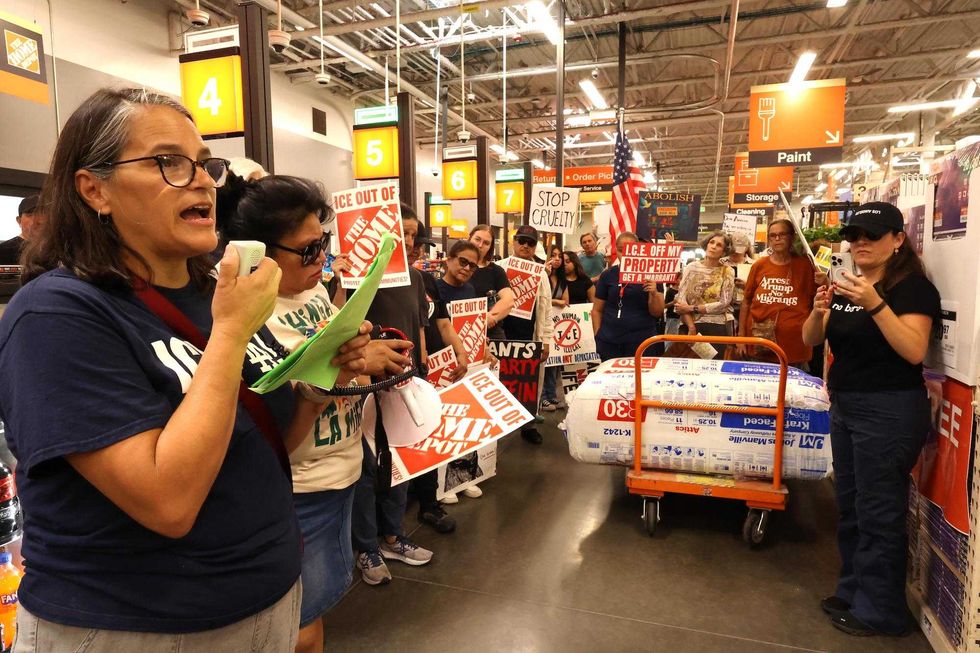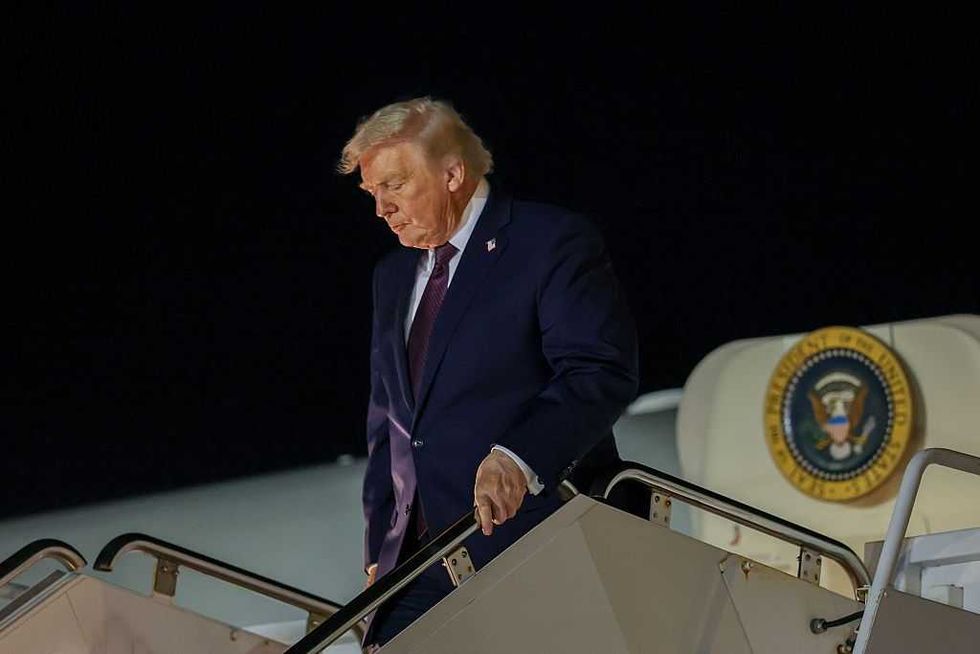Better Together: Reviving US and Indian Maritime Industries

To date, much ink has been spilled on the threat China poses to the U.S. in the Indo-Pacific. What’s gotten less attention? The fact that the Indo-Pacific is a maritime theater—meaning America’s ability to maintain presence, project power, and respond to crises depends on shipping and shipbuilding capacity.
Live Your Best Retirement
Fun • Funds • Fitness • Freedom
Sadly, the U.S. and its partner India have proven unable to meet their domestic industrial needs. For the U.S., questions loom as to its ability to sustain its navy in a crisis if shipping and ports are not readily available.
Solving the problem requires both adding ships and expanding shipyard capacities.
China understands this well, and it’s assiduously worked to dominate global maritime industry. Today, it produces more than half of the world’s ship tonnage each year. Chinese shipyards churn out side-by-side warships, commercial vessels, and even paramilitary fleets, extending Beijing’s influence across the seas. At the same time, Chinese state-backed companies, benefiting from easy loans from state banks, have invested in port projects across the globe, gaining footholds in dozens of ports.
Now, China’s shipbuilding capacity dwarfs America’s (232 to 1, by one estimate) and China has stakes in over 100 ports worldwide.
Under President Donald Trump, the U.S. has moved to counter this trend by revitalizing American shipbuilding. The Trump administration has called for a larger Navy, new commercial shipbuilding investments, and onshoring of maritime supply chains.
“We used to make so many ships… we’re going to make them very fast, very soon. It will have a huge impact,” Trump told Congress, promising to “resurrect” the American shipbuilding industry and even create a White House shipbuilding office.
This signals a return to hard industrial strength as a cornerstone of national security. But constraints remain—the result of decades of inactivity. Today, U.S. shipyards have limited capacity, aging infrastructure, and workforce shortages—all posing obstacles to efforts to scale up quickly.
These issues, ranging from antiquated facilities to a lack of skilled tradespeople, have built up over decades, and they can’t be fixed overnight.
But India is quietly demonstrating that it could be part of the answer.
Recently, Indian shipyards have exported advanced offshore patrol vessels to countries like Mauritius and Seychelles, and India even delivered an indigenously built missile corvette to Vietnam in 2023. These aren’t symbolic gifts; they’re strategic deliveries of capable naval platforms to like-minded partners—partners that also matter to America.
India’s Growing Maritime Industry
India has quietly built a substantial shipbuilding base via major shipyards—such as Mazagon Dock Shipbuilders, Cochin Shipyard, and Larsen & Toubro—that have proven capabilities across a range of vessels.
Mazagon Dock produces advanced destroyers, stealth frigates, and Scorpene class submarines for the Indian Navy. Cochin Shipyard built India’s first indigenous aircraft carrier and, along with Mazagon Dock, now serves as a leading hub for naval vessel production.
These shipyards operate under transparent procurement regimes, serve regional navies, and, increasingly, are looking outward for collaboration.
Indian shipbuilders are even expanding abroad, with Mazagon Dock recently acquiring a majority stake in Sri Lanka’s Colombo Dockyard.
This momentum is further anchored by Prime Minister Narendra Modi’s “Maritime India Vision 2030,” which outlines over 150 initiatives to modernize port and shipping infrastructure, enhance shipbuilding capacity, and strengthen India’s role in global maritime trade.
Over the past decade, we’ve seen deepening U.S.-India defense ties in air, land, and space. Shipbuilding is the natural next step. Both nations share an interest in a free and open Indo-Pacific, and both face similar challenges in scaling their naval capacity. They also bring complementary strengths to the table.
But any effective shipbuilding collaboration must be structured around existing U.S. legal frameworks, including Title X (which generally requires U.S. Navy vessels to be domestically built) and the Jones Act (which mandates U.S.-built ships for domestic trade).
Framework for US-India Shipbuilding Cooperation
The goal of U.S.-India shipbuilding cooperation isn’t to outsource American shipbuilding—it’s to expand the total allied shipbuilding capacity available to the U.S. and its friends. Done right, partnering with India can increase throughput, ease bottlenecks, and boost allied readiness in the Indo-Pacific.
This isn’t a zero-sum proposal. Growing both nations’ maritime industries would prove a net good for both democracies.
Practically, this cooperation should take six forms:
- Indian Shipbuilding for Allies and Commercial Needs: Indian shipyards can contribute to international commercial shipbuilding and to foreign military sales programs for U.S. partners. India could build patrol vessels or support ships for allied navies and coast guards. This would bolster maritime security among friendly nations without infringing on U.S. domestic capacity.
- Modular Co-Production of Ship Components: The U.S. and India can pursue a “build together” model for non-sensitive ship components. Indian yards could fabricate hull sections, modular blocks, or other ship sub-assemblies, which would then be shipped to the U.S. for final integration into American-built vessels. This mirrors some transatlantic defense-industrial arrangements and would relieve pressure on overstretched U.S. yards—all while keeping final assembly and sensitive high-tech systems on U.S. soil.
- Joint Research and Prototyping: The two countries should co-develop new naval technologies like unmanned surface vessels, digital shipyard management tools, or AI-based and digital ship systems. They can jointly prototype and test these technologies, sharing expertise and costs. Production can still be localized in the United States (or to other trusted partners) for any actual warship integration, thus complying with sourcing laws. This kind of collaboration can spur innovation in both countries’ maritime industries.
- Allied Fleet Maintenance: India can serve as a regional hub for maintenance, repair, and overhaul of vessels that the U.S. has exported or transferred to allies in the Indo-Pacific. Indian shipyards have large dry docks and skilled engineers capable of servicing warships. By handling routine overhauls for, say, a Southeast Asian navy’s patrol craft, Indian yards would support allied readiness while freeing up capacity at U.S. shipyards for higher-priority domestic programs.
- Commercial Shipbuilding Corridor: The U.S. can collaborate on dual-use vessels and help India elevate its commercial shipbuilding standards. This might involve assisting Indian yards in obtaining internationally recognized classifications and co-developing commercial ship designs. The result would be more diverse and resilient supply chains and an alternative for friendly nations that today rely on Chinese financing and shipyards for their maritime needs.
- Encourage Indian Investment in U.S. Shipyards: The U.S. should welcome Indian companies to invest in American shipyards in regions like the Gulf Coast or Great Lakes, where additional capital could expand capacity. Any such investments would, of course, be structured to comply with U.S. laws. With the right federal and state incentives, Indian industrial conglomerates could partner in reviving U.S. shipyards, creating American jobs, and building more ships in the United States. Since Indian shipyards are looking for opportunities to invest abroad, this would both make sense and serve as a novel form of strategic onshoring between trusted friends.
Strengthening Ship Repair Collaboration
Beyond building new ships, there’s another way to expand shipbuilding capacity: via ship repair. Here, U.S.-India cooperation is already yielding results—and there’s room for growth:
- Mid-Voyage Repair Partnerships: The U.S. Navy has already begun using Indian shipyards for voyage repairs of its ships during deployments. In August 2022, the USNS Charles Drew underwent repairs at an L&T shipyard in Chennai. This was the first ever U.S. Navy vessel serviced in India. In 2023, it was followed by both the USNS Matthew Perry and the USNS Salvor. These successful repair jobs show India capable and trustworthy of handling sensitive U.S. military vessels. Going forward, the U.S. and India can scale up this model, making mid-voyage repairs in India a routine option to keep American ships ready and reduce transit backlogs at home ports.
- Faster Turnaround with Original Equipment Manufacturer Partnerships: To improve repair turnaround times, Indian shipyards can co-locate spare parts inventories and even satellite facilities of major equipment manufacturing partnerships on-site. U.S. companies can play a role here by helping standardize procedures. Introducing best practices in logistics and inventory management would make Indian operations more efficient, benefiting both navies.
- Joint Workforce Development: The U.S. and India should make it easier for skilled maritime workers to move between the two countries. Both can send personnel to top shipbuilding training hubs in South Korea and Japan, then bring those skills back into their own shipyards. Simple, reciprocal labor agreements with trusted partners can help fill skills gaps, speed up technology adoption, and keep a steady pipeline of qualified workers for shipbuilding and repair.
- Maritime Group of likeminded partners. An informal group of like-minded maritime partner nations can address common interests regarding freedom of navigation, multinational shipping regulations, shared maritime threats. This new group would be a formidable block, creating the conditions for maritime industrial growth.
U.S.-India shipbuilding collaboration isn’t about outsourcing American security—it’s about rapidly fixing a shared weakness. This is an endeavor best executed together by building a deeper alliance rooted in shared capacity, trust, and complementary strengths.
In an era when maritime dominance is determined by industrial throughput and the ability to build and sustain fleets, no nation can afford to go it alone. The U.S. needs partners that not only share its values but have the industrial muscle to help meet common challenges. India is one of those rare partners.
As the U.S. retools its own shipbuilding base, it should also help build a coalition of capacity. With growing shipyards, investment capital, and commitment to a free and open Indo-Pacific, India is perfectly primed to be a pillar of that coalition. If the two engage in structured cooperation, respecting American laws while opening new industrial pathways, both will be able to sail farther and faster together.
The post Better Together: Reviving US and Indian Maritime Industries appeared first on The Daily Signal.
Originally Published at Daily Wire, Daily Signal, or The Blaze
What's Your Reaction?
 Like
0
Like
0
 Dislike
0
Dislike
0
 Love
0
Love
0
 Funny
0
Funny
0
 Angry
0
Angry
0
 Sad
0
Sad
0
 Wow
0
Wow
0









































































